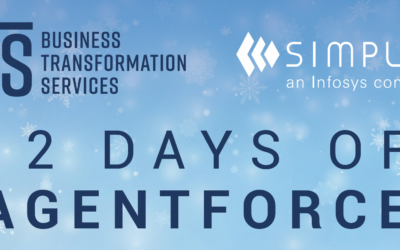With the explosion in popularity of OTT (over the top) media like streaming services, media companies are under pressure like never before to deliver seamless viewing experiences to consumers. Streaming giant Netflix, for example, surpassed 200 million subscribers globally in late 2020, which means that at any given time, Netflix could be responsible for streaming 200 million unique hours of content. Unfortunately, media networks—particularly legacy media companies—have struggled to innovate fast enough to keep up with this fast-evolving marketplace. Too often, media companies suffer from fragmented digital supply chains, in which multiple, siloed partners—both internal to the organization and external—are responsible for managing a wide range of different aspects of media production and distribution processes.
To overcome the fragmentation of digital supply chains, media companies should be working to build a single, encompassing ecosystem of integrated workflows, controls, and cloud infrastructure. A unified ecosystem can take advantage of the latest advances in automation and AI to address a number of challenges associated with digital media supply chains. In this blog post, we’re going to explore four key shortcomings inherent in most digital media supply chains that can be readily solved by introducing automation and AI to a unified media production and distribution ecosystem.
Supply chains have countless, siloed third-party partners
Modern media production is increasingly a low-margins, high-stakes business, where a high volume of business is necessary to offset low margins. To operate as leanly and rapidly as possible in this environment, media companies are increasingly outsourcing most, if not all, of the individual steps involved in media production and distribution—end-to-end steps that encompass processing, editing, finishing, duplication, and distribution. These steps involve countless individual tasks, from subtitling and closed-captioning to international licensing to reformatting and polishing. In the absence of a unified supply chain ecosystem, individual partners often develop their own, siloed workflows and systems. These systems don’t talk to one another, dramatically slowing down and reducing the efficiency of the overall media production and distribution process. A unified ecosystem that is powered by automation and AI is essential to help all of these different partners work together to support their shared goal of efficient, seamless media production and distribution.
Too much time is being wasted on routine, manual processes
Many media companies that pre-date modern technology still do many media production and distribution tasks manually, especially when it comes to generating, reviewing, and approving metadata. Metadata is essential for sorting, categorizing, routing, and archiving media content, as well as making the content accessible to a diverse audience that could span the globe. Although automation and AI can dramatically reduce the need to manually generate this metadata, most media companies don’t know how to take advantage of this technology. Instead, they use manual workflows to generate, review, and approve metadata—when in reality they could be using technology like machine learning and video, audio, and image recognition to largely automate the generation, review, and approval of metadata.
Access isn’t as tightly controlled as it could be
In modern media production and distribution workflows, the sheer number of partners has historically limited a media company’s ability to carefully manage access to its own content. When a media company loses control of this content, the company essentially loses control of the overall production and distribution pipeline. In many cases, the partner temporarily takes control of the asset—in effect, giving the partner the ability to make key decisions about how to manage the asset. In a worst-case scenario, the content can fall into the hands of unscrupulous individuals who may leak the content prematurely or sell it on the black market. The best way a media company can avoid these risks is by using automation and AI to grant access only at times and in scenarios where an individual partner should have access—and to take away that access as soon as it’s no longer needed.
Quality control and brand compliance are taking up increasing internal resources
With many different partners working on the production and distribution of media content, media companies are under enormous pressure to carefully oversee all of this work, particularly when it comes to quality control and brand compliance issues. Consequently, these areas are taking up increasing amounts of internal resources—when in reality, automation and AI as part of a unified, integrated media production and distribution ecosystem can automatically handle all day-to-day quality control and compliance monitoring. For example, standardized workflows can be created to automatically check that all metadata for media content has been appropriately tagged and delivered to the correct storefronts and that the content meets brand compliance across all geographies.
Automation and AI are key assets in media companies’ ability to streamline and optimize their digital supply chains. When media companies invest in integrating automation and AI into a unified media production and distribution ecosystem, they become better-positioned to solve a number of perpetual challenges, including the risks associated with working with diverse third-party partners, the unnecessary time that gets spent on routine, manual processes, the lack of tight controls over how partners access media assets, and the copious internal resources that are often spent on quality control and regulatory compliance.















0 Comments